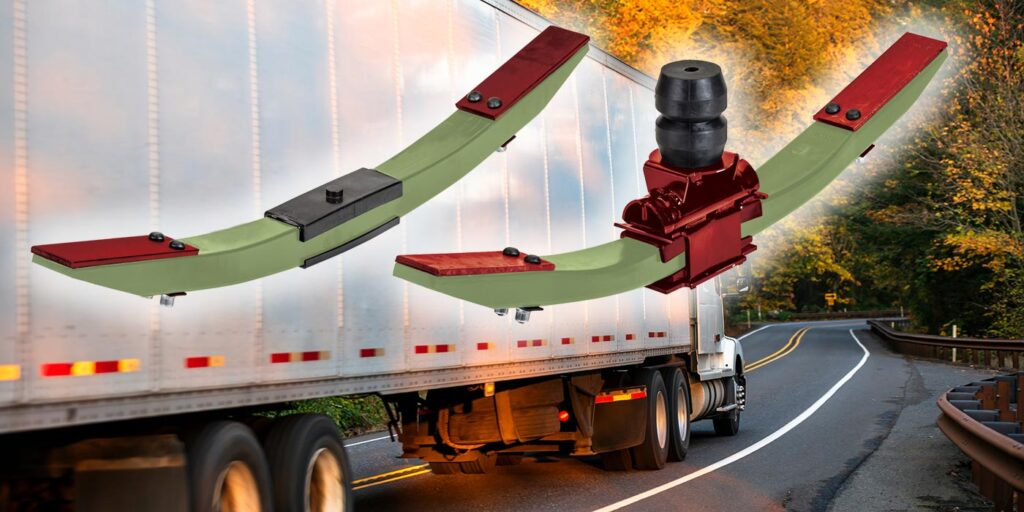Stronger. Lighter. It’s the dichotomy that nearly all fleets chase when it comes to spec’ing new equipment. This lean, mean spec’ing strategy can boost efficiency and provide equipment longevity. When you think about suspensions for demanding applications, tried-and-true steel spring suspensions spring to mind. (Pun intended.) But what if there was another way–a suspension that provided muscled performance without the bulk of steel? That’s where composite springs come in.
Composite springs aren’t a new concept. They have been around since the late 1970s, and while they quickly found a home in automotive applications, they continue to grow in the commercial market. As the name implies, a composite spring still utilizes the typical leaf construction, but the steel spring is replaced by the composite spring that helps improve fuel economy, resist corrosion, maintain ride height and provide improved vibration and harshness feedback.
The most immediate and visible ROI bullet point is the weight reduction.
“As people think about composite springs, weight savings instantly comes to mind–and it’s true. Composite springs are typically anywhere from 50 to 60% of the weight of a comparable steel springs,” said Bryan Romer, Hendrickson Composites business unit director at Hendrickson Truck Commercial Vehicle Systems. “Along with the weight savings, composite springs offer corrosion resistance. Fleets that run their trailers in the winter time often drive through salt and road slurry–that can cause rust and damage to improperly treated steel components.”
Romer explained that general composite spring construction features millions of glass fibers that run from end-to-end on the composite spring. In the event such composite springs are exposed to road debris impacts, any potential excess wear or damage may be limited to a small number of those millions of fibers.
Further, if such wear or damage eventually develops into a visual sagging condition in the composite spring, a driver should have the ability to drive it the vehicle to a repair location to have it worked on.”
Speaking of sagging, Romer noted that certain types of steel springs also may tend to sag over time due to the nature of the material, construction, operating conditions, and other factors.
“With composite springs, we can often take a spring that has years of service in the field, bring it back into the shop, and it will fit right back into the mold that it came out of,” Romer said.
Hendrickson offers a complete line of composite spring assemblies from light- to heavy-duty applications, Class 1 to 8 trucks and trailers. For more information on composite springs, click here to visit the Hendrickson website.















